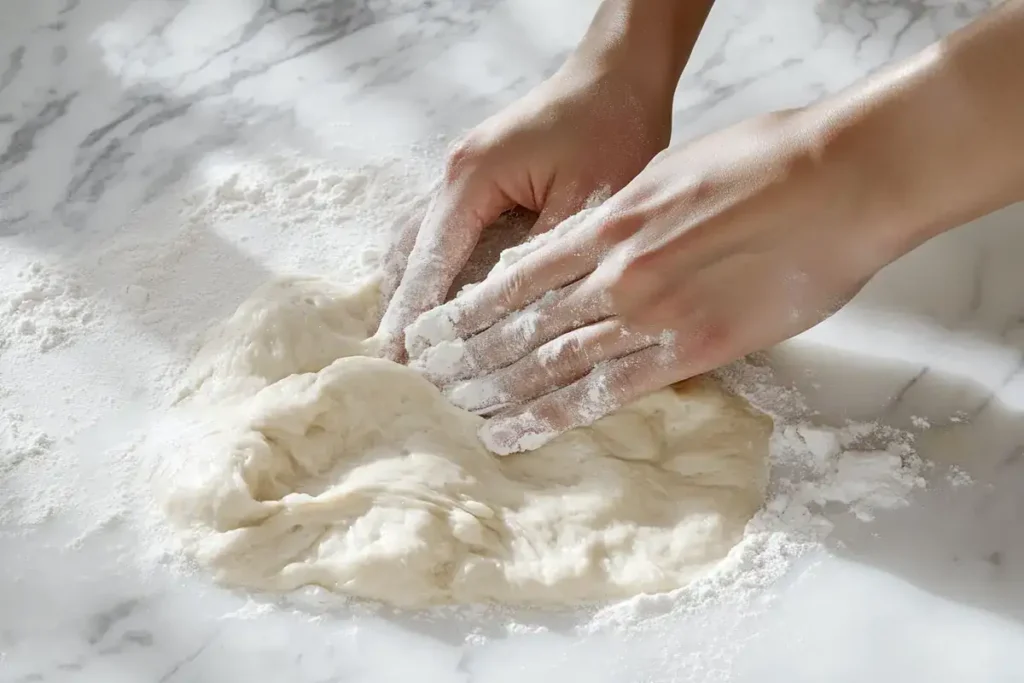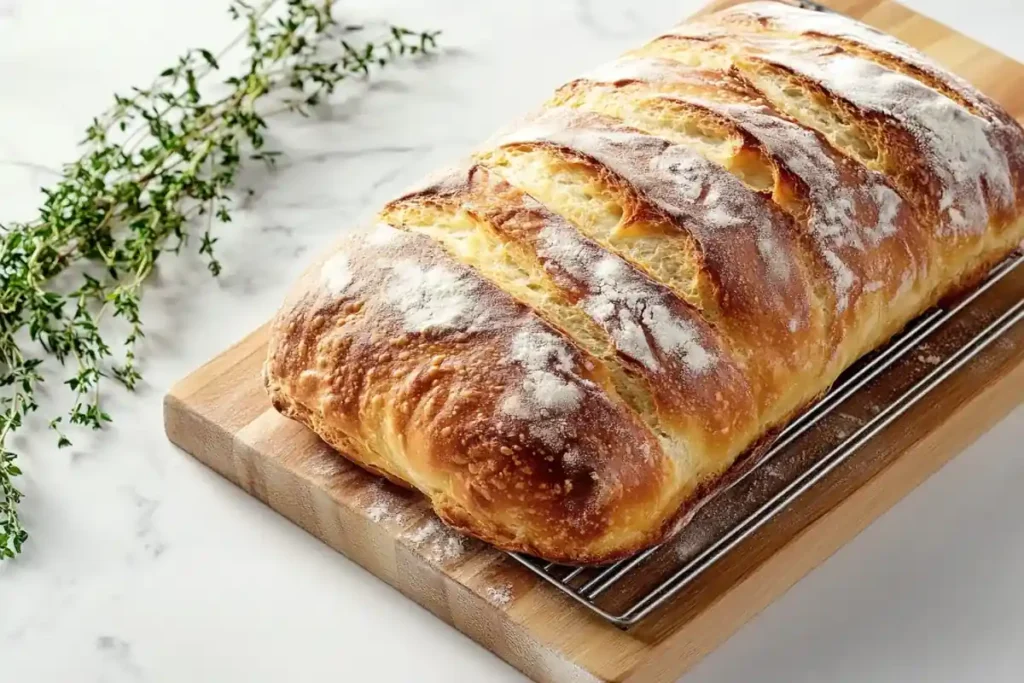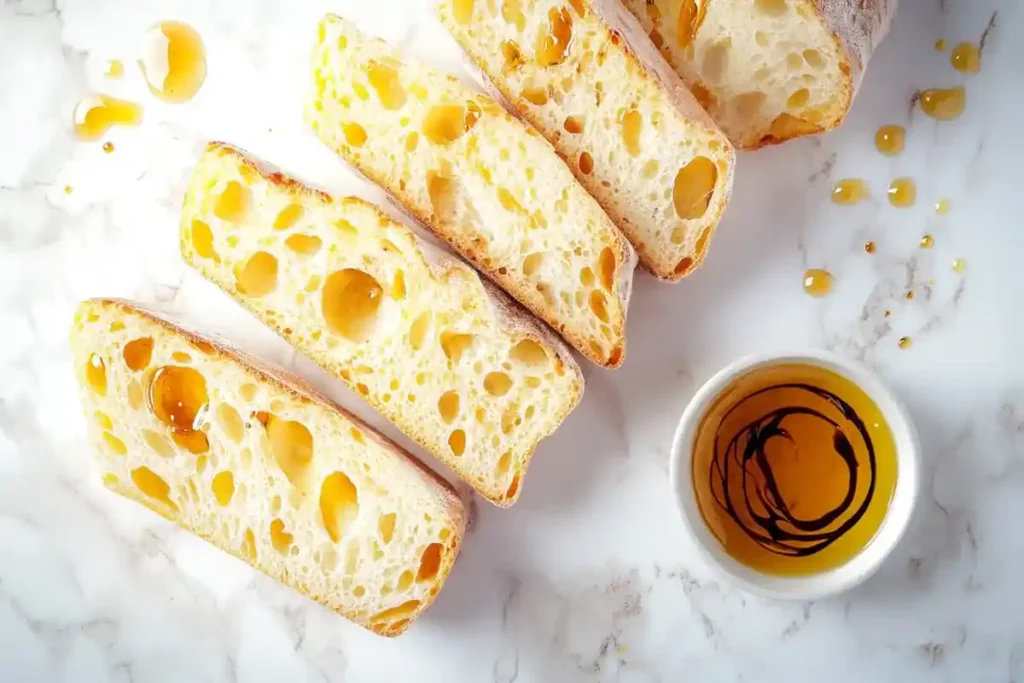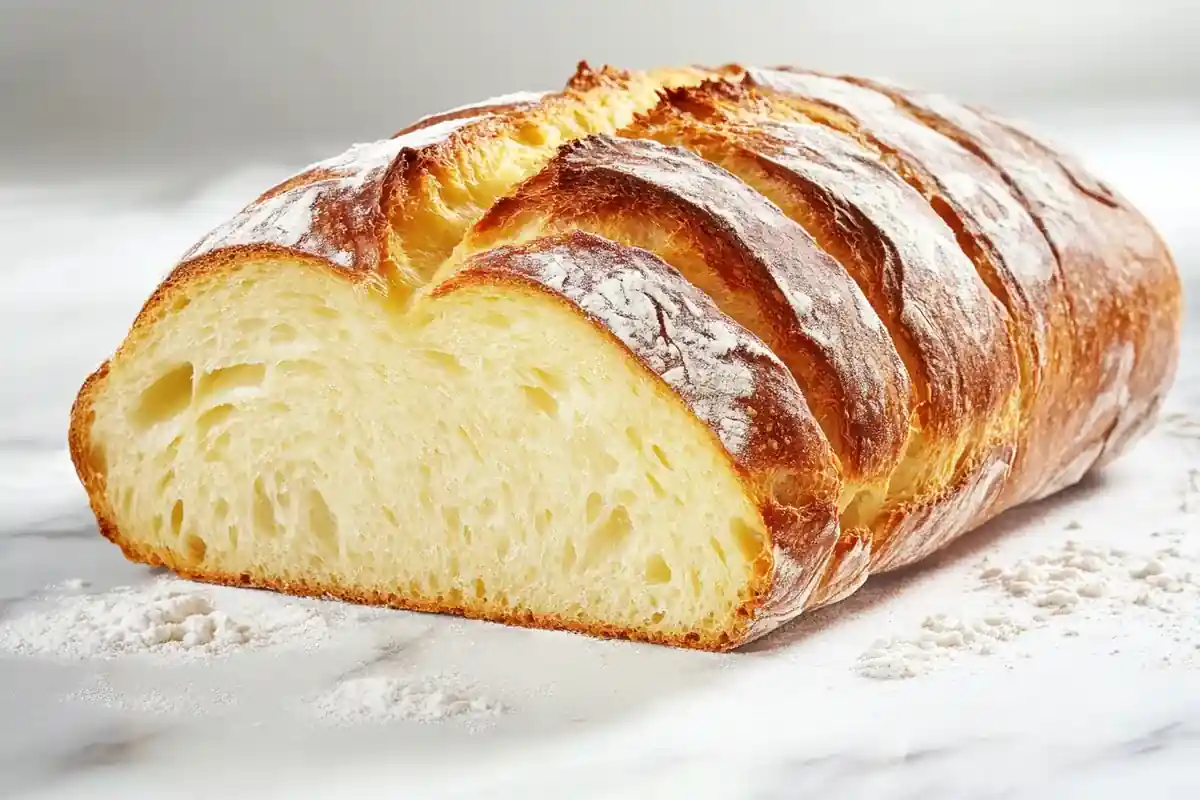Artisan Italian Bread: A Comprehensive Guide to Mastering This Classic Loaf
There’s something irresistible about artisan Italian bread. Its crusty exterior, soft interior, and deeply satisfying flavor make it a favorite for bread enthusiasts everywhere. Whether you’re a novice baker or a seasoned pro, learning to create this timeless loaf at home connects you to centuries of Italian baking tradition. This guide covers everything from the basics of what makes bread “artisan” to step-by-step instructions for baking your own. You’ll also discover the nutritional benefits of this bread and answers to common questions. Ready to embark on a delicious journey? Let’s dive in.
What Is Artisan Italian Bread?
Artisan Italian bread isn’t just bread; it’s an experience. It blends time-honored techniques, simple ingredients, and a touch of patience to create something exceptional. But what truly sets it apart from other types of bread? Let’s explore.
Defining Artisan Italian Bread
Artisan bread refers to loaves made with care, using traditional methods rather than industrial machinery. These breads often boast a thick, crunchy crust and a soft, airy interior. Artisan Italian bread, specifically, takes these characteristics and infuses them with Italy’s culinary heritage.
What makes this bread unique? It’s all about simplicity. With just a handful of ingredients—flour, water, yeast, and salt—this bread achieves remarkable depth of flavor through natural fermentation. Unlike commercial breads, artisan loaves typically skip preservatives, additives, or shortcuts.
The Italian Connection
Italy’s rich history with bread goes back thousands of years. From ciabatta to focaccia, Italian breads are known for their variety and versatility. Artisan Italian bread, however, embodies the rustic charm of the countryside. Traditionally baked in wood-fired ovens, this bread serves as the perfect companion to hearty stews, pasta dishes, or simply olive oil and balsamic vinegar for dipping.
Across regions, slight differences emerge. In northern Italy, you might find heartier loaves made with whole grains, while southern regions lean toward lighter, airier bread. Regardless of the variation, the hallmarks of artisan Italian bread remain: a crisp crust, a chewy crumb, and a flavor that’s anything but ordinary.
Benefits of Artisan Italian Bread
Artisan Italian bread is more than a tasty treat—it’s a healthier and more satisfying alternative to many store-bought options. By embracing its simplicity and authenticity, you enjoy not only better taste but also potential health benefits. Let’s delve into why this bread stands out.
Health Benefits
Unlike mass-produced bread, artisan Italian bread is made with natural ingredients and no preservatives. This means you’re consuming food that’s closer to its original form, without unnecessary additives. The long fermentation process often used in artisan baking breaks down gluten, making the bread easier to digest for some people. Additionally, the natural yeast and bacteria in the dough promote a richer flavor while offering possible gut health benefits.
Moreover, the use of unbleached flour preserves more nutrients compared to processed flours. With fewer chemicals and a lower glycemic index, artisan Italian bread can be a better option for maintaining balanced blood sugar levels.
Taste and Texture Advantages
What makes artisan bread so special is its unbeatable taste and texture. The crust is thick and crackly, giving way to a soft, airy interior that’s full of delightful chew. This bread pairs beautifully with a variety of dishes—spread it with garlic and olive oil or serve it alongside a steaming bowl of soup. Its versatility and satisfying qualities make it a staple in many homes.
For more bread ideas, you can explore other recipes like garlic mushroom grilled cheese on this page.
How to Make Artisan Italian Bread at Home
Making artisan Italian bread at home may seem like a daunting task, but it’s easier than you think with the right guidance. By following these step-by-step instructions, you’ll soon enjoy the satisfaction of baking your own loaf from scratch.
Ingredients Overview
To create authentic artisan Italian bread, you’ll need:
- Sponge Starter:
- 1 ½ cups warm water (110°F)
- 1 packet active dry yeast (2 ¼ teaspoons)
- 3 ½ cups unbleached all-purpose flour
- Bread Dough:
- ¼ cup warm water (110°F)
- 2 packets active dry yeast (4 ½ teaspoons)
- 1 cup cool water (75°F)
- 3 ½ cups unbleached all-purpose flour
- 1 tablespoon kosher salt
Equipment Needed
Before you start, gather these tools:
- A mixing bowl or stand mixer with a dough hook.
- A proofing basket or clean kitchen towel for shaping.
- A baking stone or sturdy baking sheet.
- A plant sprayer for creating steam in the oven.
Step-by-Step Instructions
- Prepare the Sponge Starter:
In a bowl, combine warm water, yeast, and flour. Mix until a thick, elastic batter forms. Cover and let it rise at room temperature for about 6 hours, or until it triples in size and just begins to collapse. The sponge is now ready to use. - Mix the Dough:
Dissolve the yeast in warm water, then combine it with the cooled water and half of the sponge starter. Gradually add flour and salt, mixing until the dough forms a sticky mass. Knead it for about 5 minutes until it becomes smooth and elastic. - First Rise:
Transfer the dough to a lightly oiled bowl, turning it to coat. Cover tightly with plastic wrap and let it rise in a warm spot for 1 hour. Refrigerate the dough for 8–24 hours to develop flavor. - Shape the Loaves:
Divide the dough into three equal pieces. Flatten each piece, then fold it like a business letter. Shape into baguettes or round loaves and place on parchment paper. Cover and let them rise for another 2 hours. - Bake the Bread:
Preheat your oven to 450°F with a baking stone inside. Score the loaves diagonally and slide them onto the hot stone. Quickly mist the loaves and oven walls with water. Bake for 25 minutes, misting twice during the first 5 minutes, until the crust is deep brown.
With patience and practice, you’ll perfect the art of making artisan Italian bread. For other delicious recipes to pair with your bread, consider this garlic cheese bread.

Nutrition Information for Artisan Italian Bread
If you’re curious about what makes artisan Italian bread such a wholesome choice, its nutritional profile will surely impress you. Made with just a few simple ingredients, this bread offers a balanced mix of carbohydrates, protein, and fiber.
Nutritional Content (Per 100g)
Artisan bread is a nutrient-dense option for your meals. Here’s a detailed breakdown:
| Nutrient | Value |
|---|---|
| Calories | 240 |
| Carbohydrates | 48g |
| Protein | 8g |
| Fat | 1g |
| Fiber | 2g |
| Sodium | 370mg |
How Artisan Bread Fits Into a Balanced Diet
Because artisan Italian bread is made with unprocessed ingredients, it’s often easier to digest compared to store-bought varieties. Its lower glycemic index makes it a better option for those managing their blood sugar levels. Plus, the natural fermentation process may enhance the bread’s nutrient availability.
Pairing this bread with nutrient-rich toppings like fresh vegetables, lean proteins, or healthy spreads can create a balanced, satisfying meal.

FAQs About Artisan Italian Bread
Curious about artisan Italian bread and how it differs from other bread types? Let’s tackle some frequently asked questions to clarify the details.
What Does “Artisan Italian Bread” Mean?
Artisan bread refers to loaves crafted with traditional methods and minimal ingredients. Italian artisan bread, in particular, highlights flavors tied to Italy’s culinary history, often using slow fermentation for enhanced taste and texture.
Is Artisan Italian Bread the Same as White Bread?
Not at all! While white bread is typically made quickly with highly processed flour and additives, artisan Italian bread relies on natural processes and unbleached flour for superior flavor, texture, and nutritional value.
What Is the Difference Between Bread and Artisan Bread?
The key difference lies in the preparation. Artisan bread focuses on quality over quantity, using methods like hand-kneading and long fermentation. This results in a loaf with a crispy crust and chewy crumb that’s miles apart from mass-produced bread.
Is Italian Bread Healthier Than White Bread?
Generally, yes. Italian bread, particularly artisan varieties, uses fewer processed ingredients, making it a healthier option. Plus, the slower fermentation process often enhances its digestibility and flavor.
For more exciting bread recipes, you might enjoy reading about milk bread for another delicious homemade option! Or check out our main page for other tasty ideas.
LSI and NLP Keywords for Artisan Italian Bread
When optimizing content for search engines, incorporating related keywords helps your article rank better and reach the right audience. For artisan Italian bread, focusing on related terms enhances your content’s relevance while providing valuable context for readers.
Long-Tail Keywords
Long-tail keywords are specific phrases that users often search for. These keywords not only align with what people are looking for but also help bring your content to life. Consider using the following:
- How to make artisan Italian bread at home.
- Best flour for Italian bread.
- Traditional Italian bread recipe.
- Easy artisan bread techniques.
These phrases naturally fit into your writing and make it easier for your audience to find you online.
Synonyms and Related Keywords
Using synonyms and related terms enriches your content and avoids repetitive phrasing. For instance, instead of repeating Italian bakery bread constantly, you might say:
- Rustic Italian bread.
- Homemade crusty bread.
- Traditional Italian loaf.
- Italian bakery-style bread.
By sprinkling these variations throughout your article, you create content that’s engaging and reader-friendly.

Part 7: Conclusion
Crafting artisan Italian bread at home is a journey that’s as rewarding as it is delicious. From understanding its unique qualities to mastering the art of baking, this guide has covered everything you need to know.
Why Artisan Italian Bread Matters
Choosing to bake or enjoy artisan bread isn’t just about taste—it’s about embracing a healthier and more authentic approach to food. With its natural ingredients, traditional methods, and cultural roots, Italian bakery bread connects us to a simpler and more fulfilling way of eating.
Your Next Steps
Now that you’re equipped with knowledge and inspiration, it’s time to put it into practice. Start by gathering your ingredients, rolling up your sleeves, and creating your first batch of Italian bakery bread. Whether you’re sharing it with loved ones or enjoying it alone with a bowl of soup, each loaf is sure to bring joy.
For more ideas, consider exploring other rustic bread recipes on our site or experimenting with toppings and dips that pair perfectly with this classic loaf. Happy baking!
Tips for Perfecting Artisan Italian Bread
Making artisan Italian bread at home is a delightful process, but achieving bakery-level results can take a bit of practice. With these practical tips, you can elevate your bread-baking game and enjoy consistent success.
Mastering the Dough
The dough is the heart of any great bread, so getting it right is crucial. Start by measuring your ingredients accurately—too much or too little flour can significantly alter the texture. Aim for a sticky dough rather than a dry one, as this creates a more open crumb structure.
Don’t skip the autolyse step, where the dough rests after initial mixing. This process allows the flour to fully hydrate, improving elasticity and making the dough easier to handle.
Enhancing Flavor
The longer the fermentation process, the more flavorful your bread will be. Try refrigerating the dough overnight to develop a rich, tangy taste. If you want a slight sourdough-like flavor without a starter, let the sponge rest a little longer.
For an extra touch, sprinkle coarse sea salt on the surface before baking. It adds both flavor and texture, making your Italian bakery bread even more irresistible.
Common Mistakes to Avoid
Even seasoned bakers occasionally run into challenges with Italian bakery bread. Knowing the common pitfalls can save you time and frustration.
Overproofing or Underproofing
Proofing the dough too long or not long enough can lead to disappointing results. Overproofed dough may collapse, while underproofed loaves won’t achieve the desired rise. A good rule of thumb is to press the dough gently with your finger; if it springs back slowly, it’s ready to bake.
Skipping Steam
Steam is essential for creating the crispy crust that defines Italian bakery bread. If you forget to mist the dough or your oven lacks moisture, the crust may turn out soft and pale. To fix this, use a plant sprayer or place a pan of water in the oven while baking.
Rushing the Process
Patience is key in bread-making. Rushing through steps, like kneading or proofing, often results in a loaf that’s dense or lacks flavor. Trust the process, and remember that great bread takes time.
By applying these tips and avoiding common mistakes, you’ll soon become a confident baker of artisan Italian bread. If you’re ready to explore even more bread recipes, consider trying a classic like milk bread. It’s another rewarding option for home bakers seeking delicious results

